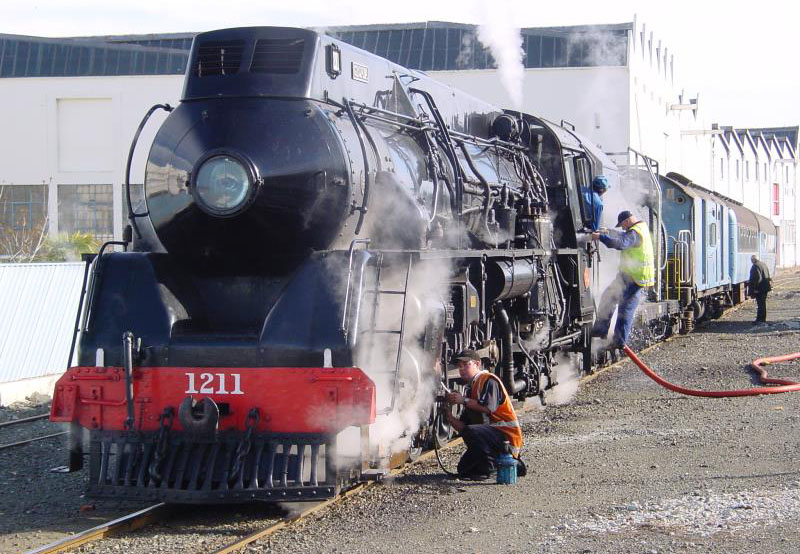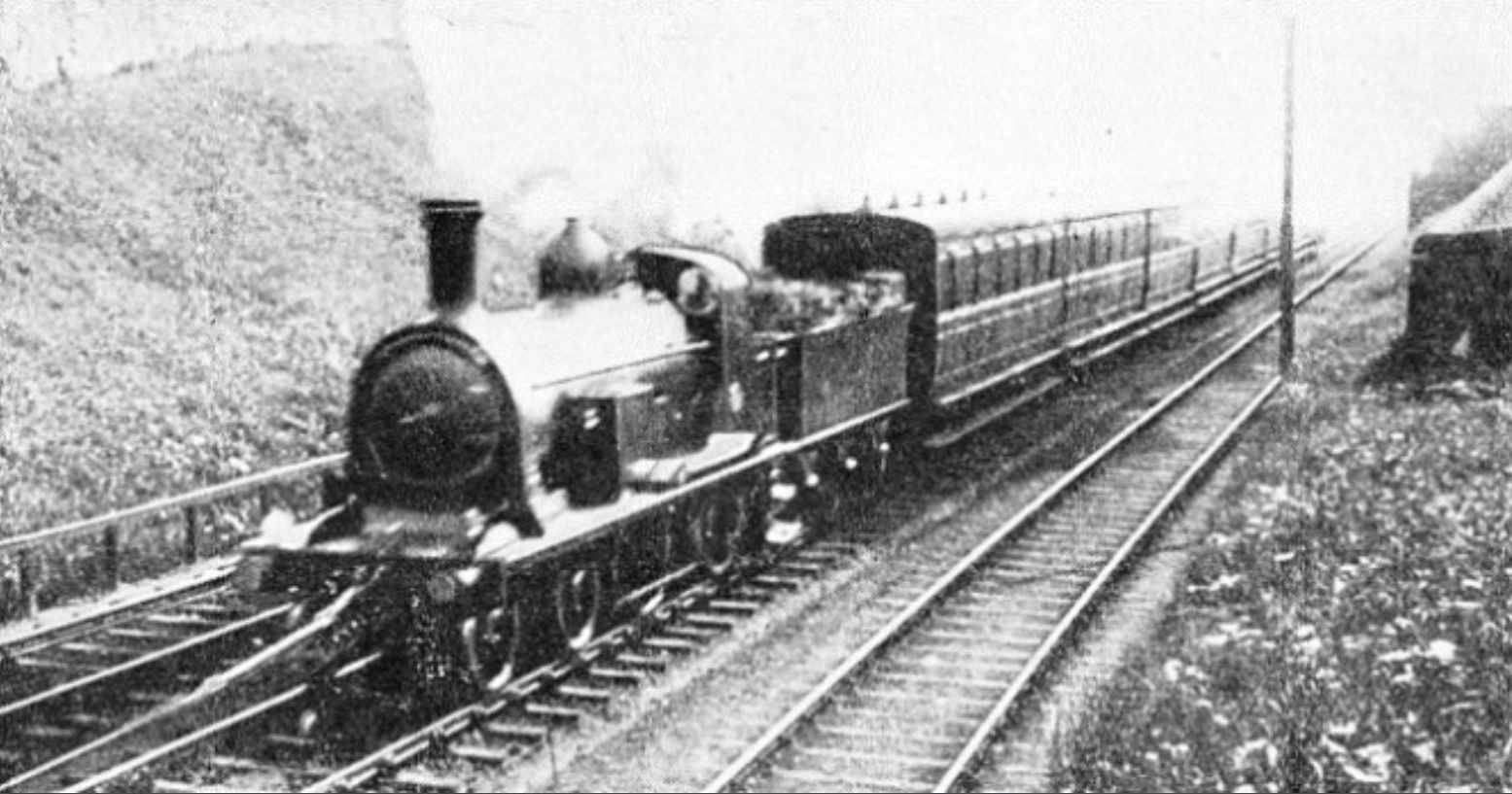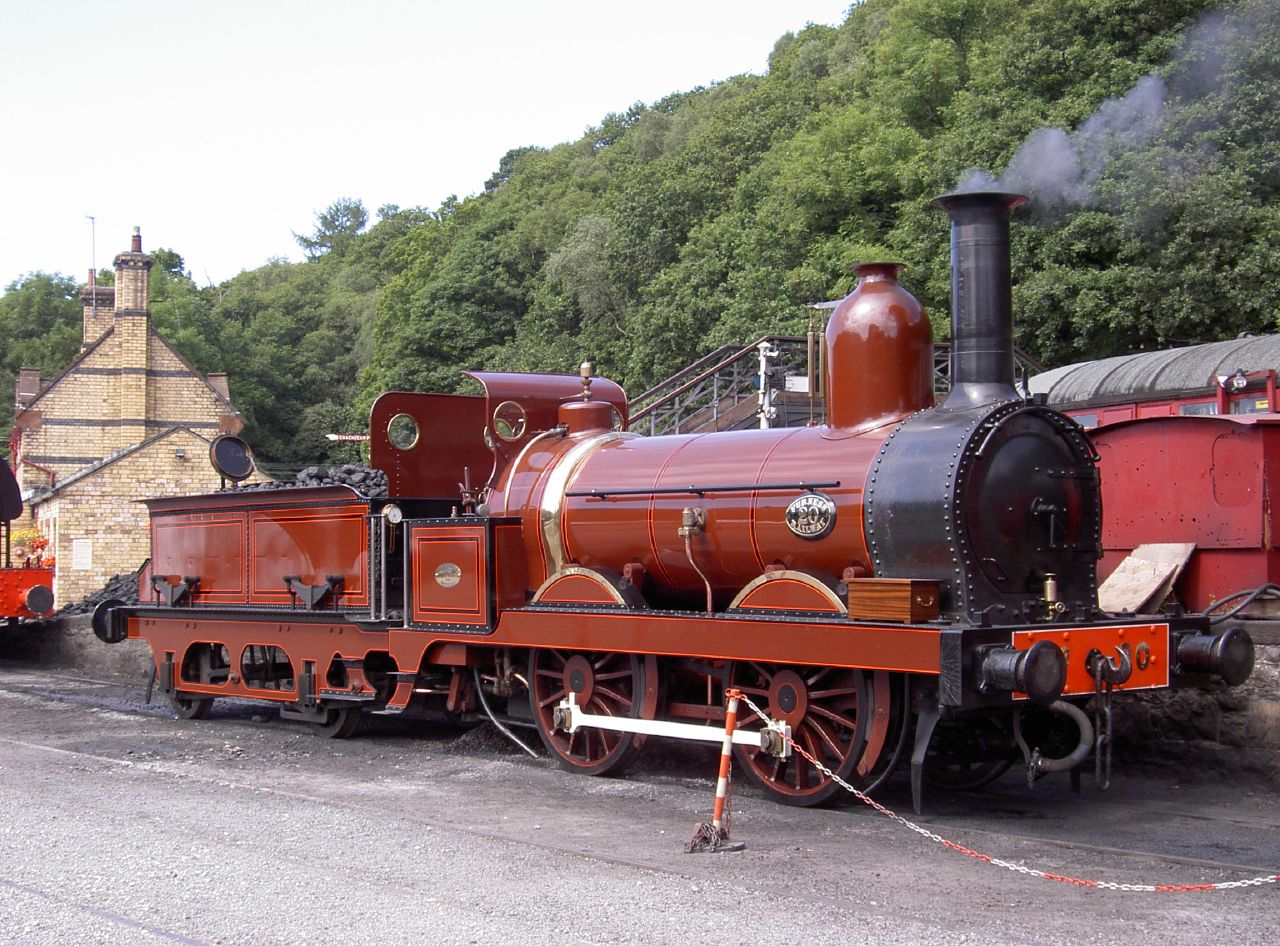|
Springburn
Springburn () is an inner-city district in the north of the Scottish city of Glasgow, made up of generally working-class households. Springburn developed from a rural hamlet at the beginning of the 19th century. Its industrial expansion began with the establishment of a chemical works by Charles Tennant on the newly opened Monkland Canal at nearby St. Rollox in 1799, which later became part of the United Alkali Company. Later in the 19th century, the construction of railway lines through the area led to the establishment of railway works and the village became a parish in its own right. The Garnkirk and Glasgow Railway first opened in 1831 to supply the St Rollox Chemical Works and the Edinburgh & Glasgow Railway was opened in 1842. Later, the City Union Line was extended to Springburn in 1871, and the Hamiltonhill Branch Line opened in 1894. Initially located outside the Glasgow boundary, the core area was eventually absorbed by the city in 1872 and other parts in 1891. ... [...More Info...] [...Related Items...] OR: [Wikipedia] [Google] [Baidu] |
Glasgow North East (UK Parliament Constituency)
Glasgow North East is a burgh constituency of the House of Commons of the Parliament of the United Kingdom (at Westminster). It was first contested at the 2005 general election. The current Member of Parliament (MP) is Maureen Burke of the Labour Party who gained the seat from Scottish National Party's Anne McLaughlin at the 2024 general election. History From the seat's creation until 2009, the constituency was represented by Michael Martin, previously MP for Glasgow Springburn from 1979. Martin was elected Speaker of the House of Commons in October 2000, but in May 2009 he announced that he would be resigning as Speaker on 21 June 2009 because of his perceived role in the MPs' expenses controversy. He was the first Speaker in 300 years to be forced out of office by a motion of no confidence. He also resigned as an MP the following day, resulting in a by-election on 12 November 2009, which was won by Willie Bain of the Labour Party with 59% of the vote. Bain retaine ... [...More Info...] [...Related Items...] OR: [Wikipedia] [Google] [Baidu] |
Glasgow Maryhill And Springburn (Scottish Parliament Constituency)
Glasgow Maryhill and Springburn ( Gaelic: ''Glaschu Cnoc Màiri agus Allt an Fhuarain'') is a constituency of the Scottish Parliament ( Holyrood), being one of eight constituencies within the Glasgow City council area. It elects one Member of the Scottish Parliament (MSP) by the plurality (first past the post) method of election. It is also one of nine constituencies in the Glasgow electoral region, which elects seven additional members, in addition to the nine constituency MSPs, to produce a form of proportional representation for the region as a whole. The constituency was created in 2011 from a merger of parts of the Glasgow Maryhill, Glasgow Springburn and a small part of the Glasgow Anniesland constituencies. The parts of Glasgow Anniesland were Kelvindale and Kelvinside, that had previously been in Glasgow Hillhead before 1997. The seat has been held by Bob Doris of the Scottish National Party since the 2016 Scottish Parliament election. Electoral region The ... [...More Info...] [...Related Items...] OR: [Wikipedia] [Google] [Baidu] |
Springburn/Robroyston (ward)
Springburn/Robroyston (Ward 17) is one of the 23 wards of Glasgow City Council. Created as Springburn, in 2007 and in 2012 it returned three council members, using the single transferable vote system. For the 2017 Glasgow City Council election, the boundaries were changed, the ward increased in size and population (the latter by 20%), was renamed ''Springburn/Robroyston'' and returned four members. Boundaries Located in the north of Glasgow, the original core of the ward centred around the district of Springburn (including the neighbourhoods of Stobhill, Old Balornock, Petershill and Balgrayhill), as well as part of Cowlairs (streets to the east of the Glasgow to Edinburgh via Falkirk Line railway tracks which form the ward's western boundary), and part of Colston (streets to the east of Springburn Road and south of Colston Road - north of this belongs to the adjoining town of Bishopbriggs in East Dunbartonshire which forms the northern boundary). The 2017 changes were ... [...More Info...] [...Related Items...] OR: [Wikipedia] [Google] [Baidu] |
Glasgow Works
Glasgow Works, formerly the St Rollox Works, is a railway rolling stock heavy maintenance and repair works established in the 1850s in the Glasgow district of Springburn by the Caledonian Railway Company, and known locally as 'the Caley'. Ownership of the works passed to the London, Midland & Scottish Railway, LMS in the 1920s and then to British Rail in the 1940s, with the size of the works reduced in the 1980s under British Rail Engineering Limited management. It was sold as part of the privatisation of British Rail in 1995 and after numerous ownership changes the site was operated by Mutares-owned subsidiary Gemini Rail under a lease from the landlord, Hansteen Holdings. The site was purchased by businessman and philanthropist David Moulsdale in 2021 before achieving listed status in 2022. The site has since been fully restored, opened and connected to the railway mainline, and operates as a joint venture with Gibsons Engineering Ltd who maintain, repair and build rolling s ... [...More Info...] [...Related Items...] OR: [Wikipedia] [Google] [Baidu] |
City Union Line
The City of Glasgow Union Railway – City Union Line, also known as the ''Tron Line'', was a railway company founded in Glasgow, Scotland, in 1864 to build a line connecting the railway systems north and south of the River Clyde, and to build a central passenger terminus and a general goods depot for the city. The through line, running from south-west to north-east across the city, opened in 1870–71, and the passenger terminal was St Enoch railway station, opened in 1876. The railway bridge across the Clyde was the first in the city. The northern section of the line passed to the North British Railway company (NBR) and became part of its suburban network. St Enoch became the passenger terminus for the Glasgow and South Western Railway, but other companies made little use of it. However, the general goods terminal at College became important, and goods and mineral traffic were the dominant traffic of the through route. The south-western section of the line was quadrupled, and ... [...More Info...] [...Related Items...] OR: [Wikipedia] [Google] [Baidu] |
North British Locomotive Company
The North British Locomotive Company (NBL, NB Loco or North British) was created in 1903 through the merger of three Glasgow locomotive manufacturing companies; Sharp, Stewart and Company (Atlas Works), Neilson, Reid and Company (Hyde Park Works) and Dübs and Company (Queens Park Works), creating the largest locomotive manufacturing company in Europe and the British Empire and the second largest in the world after the Baldwin Locomotive Works in the United States. Its main factories were located at the neighbouring Atlas and Hyde Park Works in central Springburn, as well as the Queens Park Works in Polmadie. A new central Administration and Drawing Office for the combined company was completed across the road from the Hyde Park Works on Flemington Street by James Miller (architect), James Miller in 1909, later sold to Glasgow Corporation in 1961 to become the main campus of North Glasgow College (now Glasgow Kelvin College). The two other Railway works in Springburn were St ... [...More Info...] [...Related Items...] OR: [Wikipedia] [Google] [Baidu] |
Cowlairs Works
Cowlairs Locomotive, Carriage and Wagon Works, at Cowlairs in Springburn, an area in the north-east of Glasgow, Scotland, was built in 1841 for the Edinburgh and Glasgow Railway and was taken over by the North British Railway (NBR) in 1865. It was named after the nearby mansion of Cowlairs, with both locomotive and carriage & wagon works. It was also the first works in Britain to build locomotives, carriages and wagons in the same place. It was located on the western side of the Glasgow-Edinburgh mainline at Carlisle Street. In September 1904, the Eastfield Running Sheds were built on the other side of the Glasgow-Edinburgh mainline, just to the north of the Cowlairs complex, to maintain locomotives and to free-up more engineering space at Cowlairs Works. They were closed in 1994 but the depot site was redeveloped in 2005 and is once again in use as a maintenance facility for Class 170 trains by First ScotRail. Production The first few locomotives were bought in, but in 1844, ... [...More Info...] [...Related Items...] OR: [Wikipedia] [Google] [Baidu] |
Glasgow
Glasgow is the Cities of Scotland, most populous city in Scotland, located on the banks of the River Clyde in Strathclyde, west central Scotland. It is the List of cities in the United Kingdom, third-most-populous city in the United Kingdom and the 27th-most-populous city in Europe, and comprises Wards of Glasgow, 23 wards which represent the areas of the city within Glasgow City Council. Glasgow is a leading city in Scotland for finance, shopping, industry, culture and fashion, and was commonly referred to as the "second city of the British Empire" for much of the Victorian era, Victorian and Edwardian eras. In , it had an estimated population as a defined locality of . More than 1,000,000 people live in the Greater Glasgow contiguous urban area, while the wider Glasgow City Region is home to more than 1,800,000 people (its defined functional urban area total was almost the same in 2020), around a third of Scotland's population. The city has a population density of 3,562 p ... [...More Info...] [...Related Items...] OR: [Wikipedia] [Google] [Baidu] |
Glasgow City Council
Glasgow City Council (Scottish Gaelic: ''Comhairle Baile Ghlaschu'') is the Local government in Scotland, local government authority for Glasgow, Glasgow City council area, Scotland. In its modern form it was created in 1996. Glasgow was formerly governed by a corporation, also known as the town council, from the granting of its first burgh charter in the 1170s until 1975. From 1975 until 1996 the city was governed by City of Glasgow (1975–1996), City of Glasgow District Council, a lower-tier authority within the Strathclyde region. Glasgow City Council has been under no overall control since 2017, being led by a Scottish National Party minority administration. The council has its headquarters at Glasgow City Chambers in George Square, completed in 1889. History Glasgow Corporation Glasgow was given its first burgh charter sometime between 1175 and 1178 by William the Lion. It was then run by "Glasgow Town Council", also known as "Glasgow Corporation", until 1975. The city ... [...More Info...] [...Related Items...] OR: [Wikipedia] [Google] [Baidu] |
Edinburgh & Glasgow Railway
The Edinburgh and Glasgow Railway was authorised by act of Parliament on 4 July 1838. It was opened to passenger traffic on 21 February 1842, between its Glasgow Queen Street railway station (sometimes referred to at first as Dundas Street) and Haymarket railway station in Edinburgh. Construction cost £1,200,000 for 46 miles (74 km). The intermediate stations were at Corstorphine (later Saughton), Gogar, Ratho, Winchburgh, Linlithgow, Polmont, Falkirk, Castlecary, Croy, Kirkintilloch (later Lenzie) and Bishopbriggs. There was a ticket platform at Cowlairs. The line was extended eastwards from Haymarket to North Bridge in 1846, and a joint station for connection with the North British Railway was opened on what is now Edinburgh Waverley railway station in 1847. Patronage on the line quickly reached double the railway's initial estimates, and by 1850 58 locomotives and 216 coaches were needed to handle the traffic. Goods traffic started in March 1842 and slowly increas ... [...More Info...] [...Related Items...] OR: [Wikipedia] [Google] [Baidu] |
Neilson & Company
Neilson and Company was a locomotive manufacturer in Glasgow, Scotland. The company was started in 1836 at McAlpine Street by Walter Neilson and James Mitchell to manufacture marine and stationary engines. In 1837 the firm moved to Hyde Park Street and was known as Kerr, Mitchell and Neilson and, in 1840, Kerr, Neilson and Company, becoming Neilson and Mitchell in 1843. Locomotive building began in 1843 for the local railways. In 1855 production of marine and stationary engines discontinued and the company changed its name again to Neilson and Company. Among those who later became notable in the field were Henry Dübs and Patrick Stirling. By 1861, business had increased to such an extent, that a new works was built at Springburn, also named "Hyde Park Works." In 1864, Henry Dübs set up in business on his own at Queens Park Works, as Dübs and Company, taking a number of key staff with him. James Reid, who had previously worked for Neilson, however, returned and became ... [...More Info...] [...Related Items...] OR: [Wikipedia] [Google] [Baidu] |
Sharp, Stewart & Company
Sharp, Stewart and Company was a steam locomotive manufacturer, originally based in Manchester, England. The company was established in 1843 following the dissolution of Sharp, Roberts & Co.. In 1888, it relocated to Glasgow, Scotland, where it later amalgamated with two other Glasgow-based locomotive manufacturers to form the North British Locomotive Company. Early days Iron merchant Thomas Sharp and mechanical engineer Richard Roberts first formed a partnership, Sharp, Roberts & Co. (about which, see also company section in article on Roberts), to manufacture textile machinery and machine tools. They opened the Atlas Works in Manchester in 1828. They had built a few stationary steam engines, and in 1833 built a locomotive, ''Experiment'' for the Liverpool and Manchester Railway. It was a four-wheeled 2-2-0 with vertical cylinders over the leading wheels. After a number of modifications, three similar locomotives (Britannia, Manchester, and ''Hibernia'') were built in 1834 f ... [...More Info...] [...Related Items...] OR: [Wikipedia] [Google] [Baidu] |








